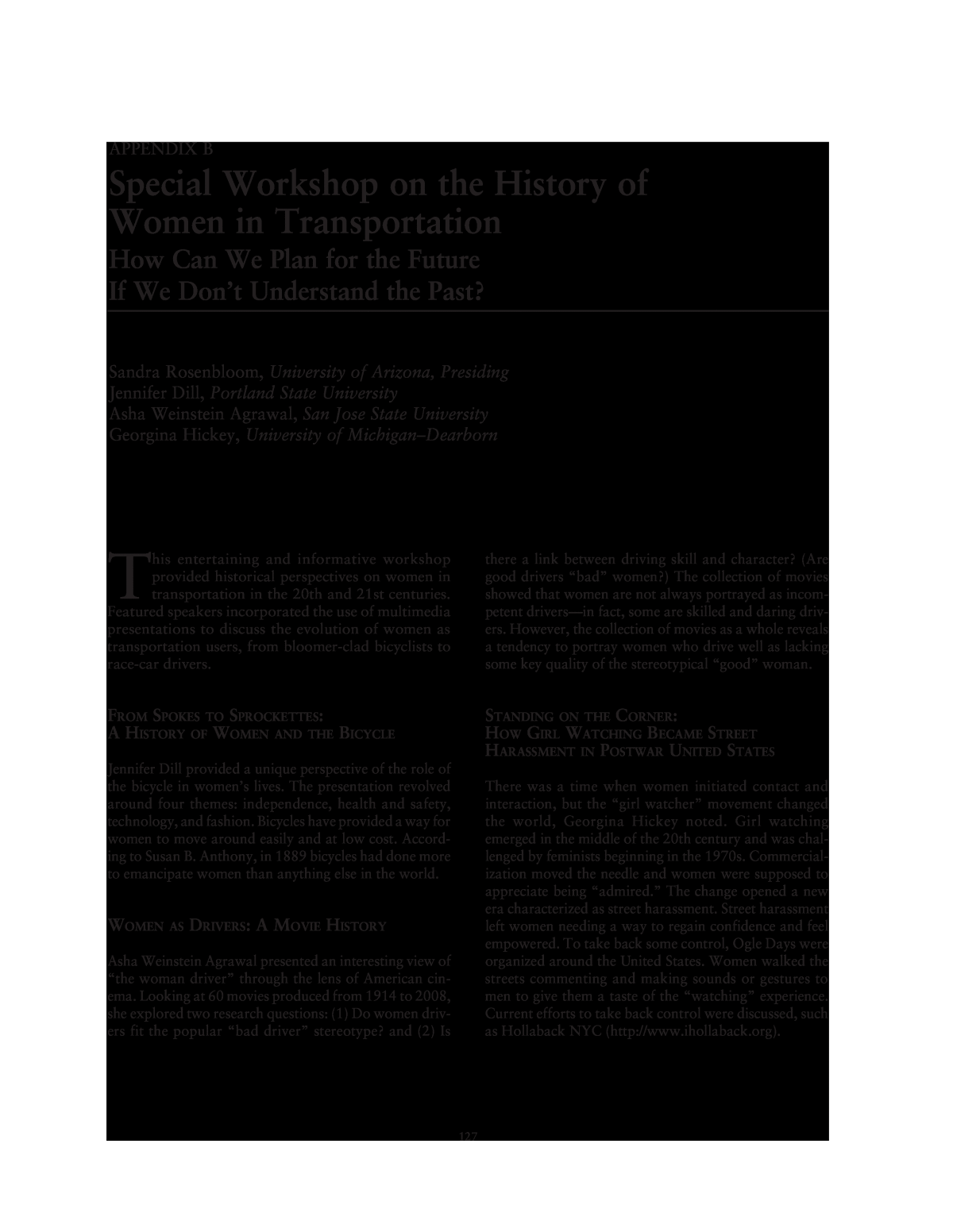
Below is the uncorrected machine-read text of this chapter, intended to provide our own search engines and external engines with highly rich, chapter-representative searchable text of each book. Because it is UNCORRECTED material, please consider the following text as a useful but insufficient proxy for the authoritative book pages.
127 APPENDIX B Special Workshop on the History of Women in Transportation How Can We Plan for the Future If We Donât Understand the Past? sandra rosenbloom, University of Arizona, Presiding Jennifer Dill, Portland State University Asha weinstein Agrawal, San Jose State University Georgina Hickey, University of MichiganâDearborn this entertaining and informative workshop provided historical perspectives on women in transportation in the 20th and 21st centuries. Featured speakers incorporated the use of multimedia presentations to discuss the evolution of women as transportation users, from bloomer-clad bicyclists to race-car drivers. From spokes to sprockettes: A History oF Women And tHe Bicycle Jennifer Dill provided a unique perspective of the role of the bicycle in womenâs lives. the presentation revolved around four themes: independence, health and safety, technology, and fashion. Bicycles have provided a way for women to move around easily and at low cost. Accord- ing to susan B. Anthony, in 1889 bicycles had done more to emancipate women than anything else in the world. Women As drivers: A movie History Asha weinstein Agrawal presented an interesting view of âthe woman driverâ through the lens of American cin- ema. looking at 60 movies produced from 1914 to 2008, she explored two research questions: (1) Do women driv- ers fit the popular âbad driverâ stereotype? and (2) Is there a link between driving skill and character? (Are good drivers âbadâ women?) the collection of movies showed that women are not always portrayed as incom- petent driversâin fact, some are skilled and daring driv- ers. However, the collection of movies as a whole reveals a tendency to portray women who drive well as lacking some key quality of the stereotypical âgoodâ woman. stAnding on tHe corner: HoW girl WAtcHing BecAme street HArAssment in postWAr United stAtes there was a time when women initiated contact and interaction, but the âgirl watcherâ movement changed the world, Georgina Hickey noted. Girl watching emerged in the middle of the 20th century and was chal- lenged by feminists beginning in the 1970s. Commercial- ization moved the needle and women were supposed to appreciate being âadmired.â the change opened a new era characterized as street harassment. street harassment left women needing a way to regain confidence and feel empowered. to take back some control, ogle Days were organized around the united states. women walked the streets commenting and making sounds or gestures to men to give them a taste of the âwatchingâ experience. Current efforts to take back control were discussed, such as Hollaback NYC (http://www.ihollaback.org).
